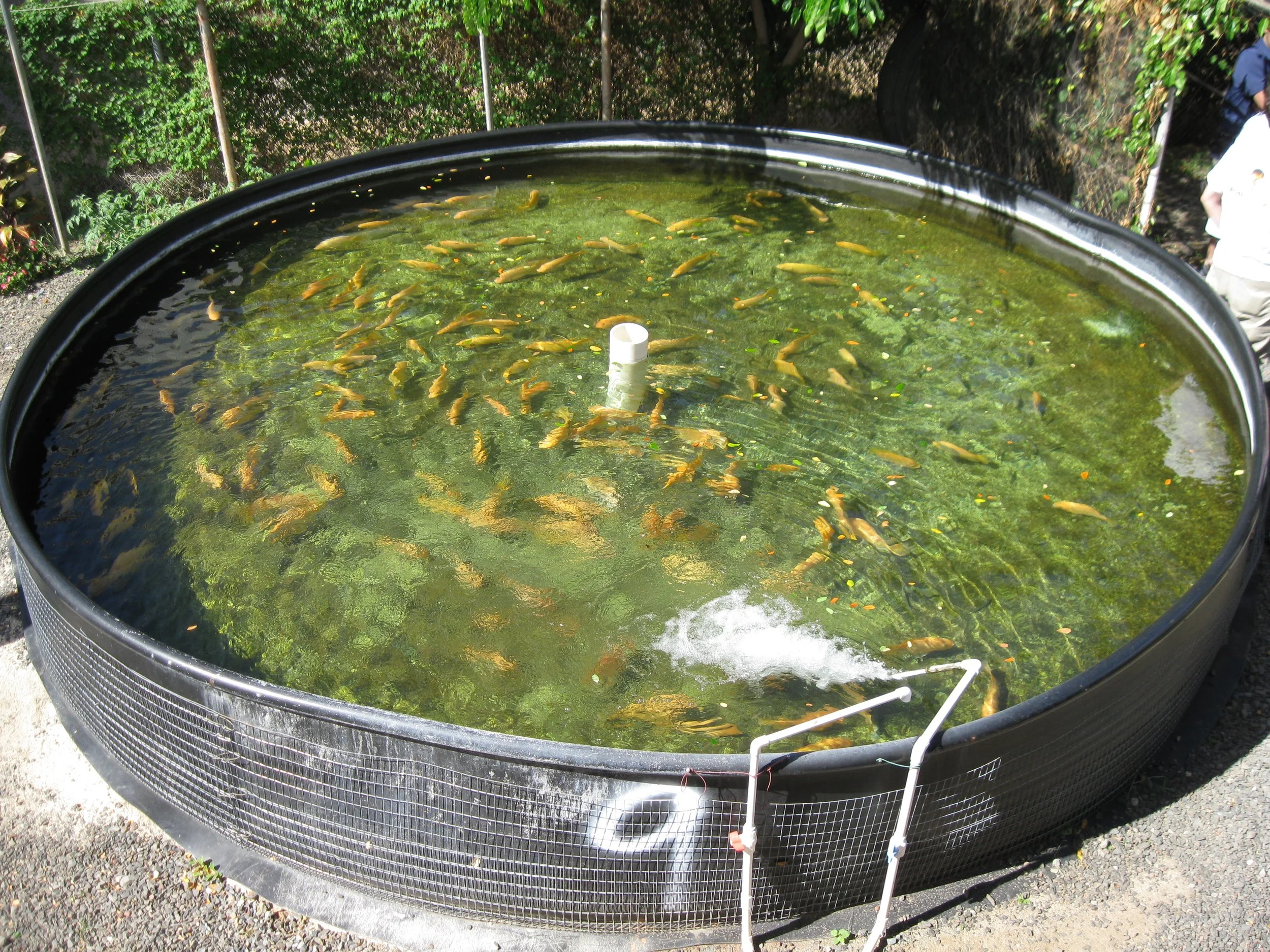The Blue Revolution: Putting the Benefits of Aquaculture Into Perspective
By Sara Klimek
December 7, 2017
My uncle is a fisherman. He owns a few vessels, dock space, poles, and bait. I am a fisherman too, but I do not rely on the ocean for my catch. Instead of an ocean, I have several 600 gallon tanks, a set of oceanographic probes, and a desire to change the way humans view seafood. I am an aquaculturist.
Since 1970, oceanic wild fish populations have declined by nearly 50 percent and scientists estimate that we will run out of seafood by 2050. The crash of wild fish populations will threaten the job security of nearly 50 million people around the world. How do scientists plan to fix our current global trajectory and halt this ecological and social nightmare?
Conservationists turn to aquaculture as a plausible solution. Aquaculture is defined by the National Oceanic and Atmospheric Organization (NOAA) as the “breeding, rearing, and harvesting of plants and animals in all types of water environments, including ponds, rivers, lakes, and the ocean.” Aquaculture is particularly valuable in arid climates and in urban spaces because its scale can be modified to the size of the setting. Backyard aquaponics, where fish and plants are grown together, has been increasing in popularity because these systems produce more nutrients with less waste. The fish supply nutrients to the plants, which in turn absorb toxic organic compounds. Despite aquaculture’s potential, many consumers continue to doubt its safety to both human and environmental health.
Like any agricultural field, there are companies that choose to use aquaculture sustainably and those that do not. The media often targets unsustainable facility production methods and the direction of waste production via aquaculture systems and labels them as representative of the entire industry. However, most aquaculture systems actually have a reputable waste system, including several filters for solid waste and toxic compounds.
What the media often does not show are the innovations in aquaculture that are making it an essential agricultural field. Ornamental aquaculture is especially vital to the aquarium supply and the economies of developing regions. Ornamental fish trading is so prosperous that poor fishermen facing homelessness and starvation will risk their lives to capture as many vividly-colored fish as they can. Harvesting of aquarium organisms like clownfish, yellow tangs, and shrimp is often done in coral reefs via cyanide or dynamite fishing, which can kill coral and endanger non-target species. By growing these species in a lab, aquaculturists are able to supply the global aquarium market and protect fragile ecosystems.
I had the amazing experience of working with one ornamental species, the royal gramma, a colorful saltwater fish. This species is native to Puerto Rico, where it has been driven to near-extinction by the industrial pollution of waterways and systematic fishing. My research has allowed scientists to replicate royal gramma reproduction in a larger facility, which will support sustainable harvesting practices. Continued research into species like the royal gramma will allow us to use aquaculture techniques to ensure that global aquarium markets and fish populations have a sustainable relationship.
Aquaculture has the potential to feed societies around the world. One organization, Aquaculture Without Frontiers (AWF), has gained momentum travelling to developing regions around the world to teach communities about aquaculture. They utilize resilient, warm-water fish like tilapia to help feed communities where traditional farming is not practical. Aquaculture has also been popping up in food-desert cities where aquaponics systems help generate organic produce and fish. Inner-city programs, like those in Harlem and Berlin provide employment and engineering skills for youth while reducing the scarcity of fresh food.
Aquaculture is just a small component of the blue revolution, a social movement to protect our oceans. Despite the media’s harsh labelling of the industry, aquaculture professionals are motivated to identify stigmas associated with production, reduce dependency on the ocean, and provide needy communities with skills to combat food injustice. All of these components are necessary to create a more sustainable method of food and ornamental production.
